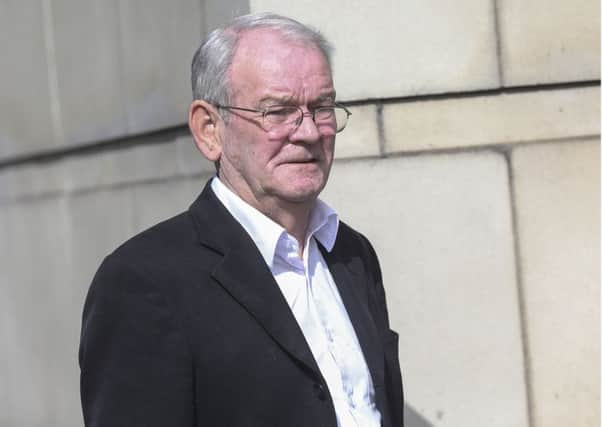Kingsmills: witness accused of ulterior motive with Nairac '˜yarn'


Gerald Byrne was one of the first people on the scene of the attack at Kingsmills in south Armagh in 1976.
Ten Protestant workmen were gunned down beside their minibus as they returned home from work in a period of spiralling sectarian murders. The PSNI hold the IRA responsible although it never accepted responsibility.
Advertisement
Hide AdAdvertisement
Hide AdMr Byrne, said there was “the smell of death” at the scene and that “the blood was running down the road”.
He told police in 1976 he left the scene at 6.45pm but in further statements to Justice for Innocent Victims of Terrorism Ltd (JIVT) in 2013 and the Police Ombudsman in 2016 said he left one hour and 45 minutes later.
His later statements introduced claims the security forces did not arrive for some 2.5 hours and that crowds walking freely around the scene risked contaminating forensic evidence.
The later statements also said his current partner had been married to a British soldier and that she had come home once to find Capt Robert Nairac bouncing her children on his knee and saying he had stopped the victims’ minibus at Kingsmills to allow the massacre to take place.
Advertisement
Hide AdAdvertisement
Hide AdBut Mr Byrne said he was now only claiming Nairac had been present at the massacre.
The court heard Mr Byrne visited sole survivor Alan Black in 2013 to find out the truth about Nairac. Mr Black made a statement to JIVT about their conversation soon after but Mr Byrne rejected its accuracy. This prompted Mr Black’s lawyer Fiona Doherty to accuse him of spinning “a yarn”.
Alan Kane QC for the families also accused Mr Byrne of having an “ulterior purpose” and that “someone else wants Nairac involved”.
Peter Coll QC for the MOD said Mr Byrne’s aim was to push the focus “away from IRA involvement to British military involvement in this terrible atrocity”. It was not credible that the anti-British south Armagh IRA would let an British army officer like Nairac lead them, he said.
Advertisement
Hide AdAdvertisement
Hide AdBut Mr Byrne repeatedly insisted he was telling the truth and reporting what he had been told by his partner (whom he said has declined to give evidence herself).
He also said BBC reporter Paul Clarke had been able to walk freely around the massacre scene as no security forces were present for around 2.5 hours.
But Mr Clarke countered in a statement that he had been closely supervised by the army at all times.
Mr Byrne conceded he based this claim on information from Eugene Reavey, whose three brothers were shot by loyalists nearby the night before.
Advertisement
Hide AdAdvertisement
Hide AdHe revealed that Mr Reavey had happened upon the massacre on his way home from Newry hospital and that the pair had then walked to the ten bodies.
Asked why Mr Reavey had done this, Mr Byrne said: “He probably wanted to see what had happened, in disbelief.”
Mr Coll later put it to former investigating officer DCI James Mitchell that intelligence placed the getaway minibus at the house of a family called McGuinness, 100 metres from the crime scene, at 5.15pm on the day of the shootings.
But Mr Mitchell dismissed this, saying the reported van colour was wrong.